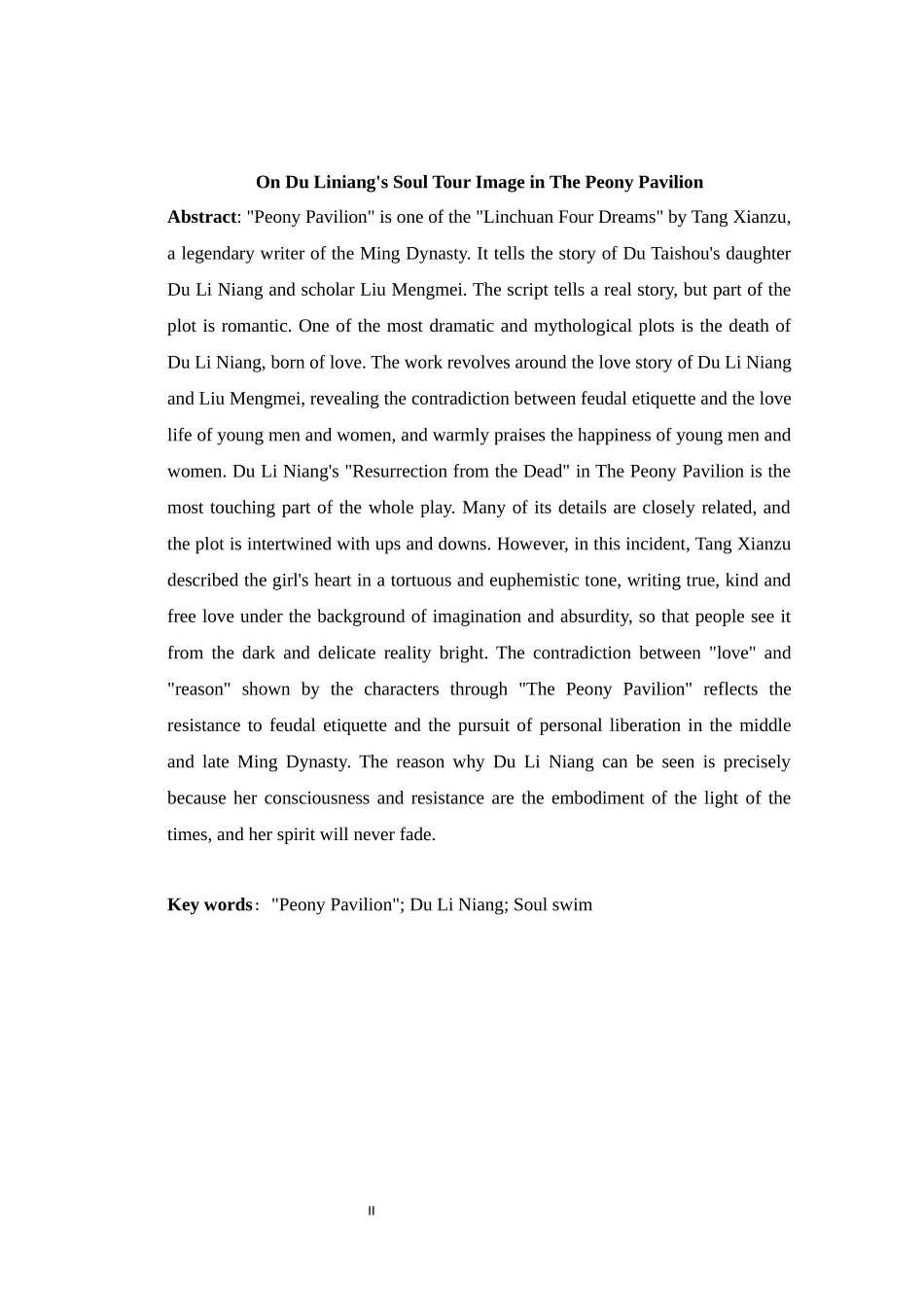论《牡丹亭》中杜丽娘的魂游形象摘 要:《牡丹亭》是明朝传奇作家汤显祖的“临川四梦”之一。它讲述了杜太守的女儿杜丽娘和书生柳梦梅的故事。剧本讲述了一个真实的故事,但剧情的一部分是浪漫的。最具戏剧性和神话色彩的情节之一是因爱而生的杜丽娘之死。该作品围绕杜丽娘和柳梦梅的爱情故事展开,揭示了封建礼节与青年男女爱情生活之间的矛盾,并热烈赞扬青年男女的幸福。《牡丹亭》中的杜丽娘“死而复活”是整个剧中最感人的部分。它的许多细节是密切相关的,并且情节交织在一起跌宕起伏。然而,在这一事件中,汤显祖用曲折而委婉的语气描述了女孩的心,在想象和荒诞的背景下写出了真实,善良和自由的爱情,使人们从黑暗和微妙的现实中看到了光明。人物通过《牡丹亭》所表现出的“爱”与“理”之间的矛盾,反映了明代中后期对封建礼节的反抗和对个人解放的追求。之所以能看到杜丽娘,恰恰是因为她的意识和抵抗是时代之光的体现,经久不衰,精神永不褪色。关键词:《牡丹亭》;杜丽娘;魂游IIOn Du Liniang's Soul Tour Image in The Peony PavilionAbstract: "Peony Pavilion" is one of the "Linchuan Four Dreams" by Tang Xianzu, a legendary writer of the Ming Dynasty. It tells the story of Du Taishou's daughter Du Li Niang and scholar Liu Mengmei. The script tells a real story, but part of the plot is romantic. One of the most dramatic and mythological plots is the death of Du Li Niang, born of love. The work revolves around the love story of Du Li Niang and Liu Mengmei, revealing the contradiction between feudal etiquette and the love life of young men and women, and warmly praises the happiness of young men and women. Du Li Niang's "Resurrection from the Dead" in The Peony Pavilion is the most touching part of the whole play. Many of its details are closely related, and the plot is intertwined with ups and downs. However, in this incident, Tang Xianzu described the girl's heart in a tortuous and euphemistic tone, writing true, kind and free love under the background o...


